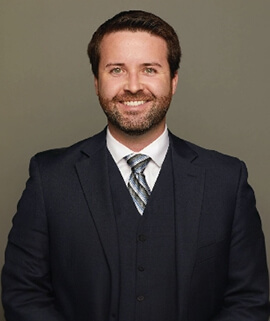California Motorcycle Accident Laws: Bike Crash Injury Lawsuit Info
| FAQ | What Should I Do? | Statistics | Statute of Limitations | Safety Information |
Driver’s License Requirements
Effective 1/1/2005, all motorcycle drivers must have a Class C driver license or driver permit According to California Motorcycle Laws (Section 406(a)
- Operators of the motorcycle require M-1 or M-2 endorsement on a driver’s license.
- M-1 permits the driver to operate a motorcycle, motor-driven cycle and moped
- M-2 permits for operation of a moped or motorized bicycle only.
- In Order to obtain an M-1 or M-2 endorsement, the driver must:
- Pass the appropriate written exam
- Pass riding skills test (DMV will accept certificate of competence from an approved novice motorcyclist training program instead of skills test, such as the California Motorcyclist Safety Program).
- For individuals under the age of 21, a rider must effectively complete a compulsory Basic Rider education course accepted by the CHP. For examples, the Basic Rider course available through the California Motorcyclist Safety Program.
Motorcycle Safety Clothing
Helmet Use Whether you are a driver or a passenger, all individuals in a motorcycle is required by law under California Vehicle Code Section 27803 to wear a helmet. At Downtown LA Law, we strongly advise all riders to wear helmets, as refusal to do so can cause serious injury or death. Other Clothing requirements:
- Only Single earphones allowed in helmets, not speakers. There are no restrictions on earplugs
- Eye protection is not required, but highly recommended
Motorcycle Requirements
In addition to wearing the proper clothing, California Motorcycle requires that a motorcycle meet certain minimum guidelines, including:
- Tires with adequate tread for safe operation.
- A functional Headlight (the Daytime us of headlights is required for motorcycles built during or after 1978), taillight, brake light, and both a right and left turn signal is required by law.
- Front and rear brakes.
- A horn and a left and right mirror
- The Handlebar should not be positioned in a way where the hands of the driver are more than six inches above the drivers shoulder when seated
- Muffler required, and may not be equipped with a cutout, bypass or similar device (California Vehicle Code 27150)
- No restrictions on Radar Detectors
Insurance Guidelines:
In California, liability insurance is required for all individuals who drive an automobile. Insurance can be demonstrated in one of four ways, including: 1. Coverage by a motor vehicle or car liability insurance policy; 2. A cash deposit of $35,000 with the DMV; 3. A certificate of self-insurance issued by DMV to owners of fleets of more than 25 vehicles; or 4. A surety bond for $35,000 obtained from an insurance company licensed to do business in California. In California, by far the most common form of liability insurance is acquired through a liability insurance policy. Furthermore, every insurance policy must satisfy the minimum statutory limits of liability insurance. Failure to follow these guidelines can result in harsh penalties. These guidelines are:
- Bodily Injury: Bodily injury coverage entails two minimum requirements, the per-person limit and the limit per accident. In California, the minimum per-person limit for bodily injury is $15,000 and the minimum bodily injury limit per accident is $30,000. Therefore, if an individual only maintains the minimum coverage liability, the amount the insurance will pay will not exceed $30,000 no matter how many passengers were involved.
- Property Damage: The minimum amount of coverage required for damage to other people’s property (their car, their fence, etc.) is $5,000. Comprehensive coverage or losses resulting from incidents other than collision other than collision is not mandatory by law.
Statute of Limitations
Statute of Limitations refers to the law the limits the amount of time within which a victim involved in a car accident may bring about legal proceedings. In the state of California, an individual has TWO YEARS in which to file a lawsuit for their damages resulting in a car accident. Although failure to file a claim within the statutory period could result in barring your claim, there are certain exceptions. Although the statutory period begins to run on the date of the accident, exceptions will be made in situations where the injured party was mentally incompetent or incapable of filing a claim. Furthermore, the statutory period is extended for minors under the age of 18. The minor has until their eighteenth birthday, plus the statutory period of 2 years to file the suit Lastly, the statutory period may be extended where an injury is unknown, but is later discovered. Additionally, Car Accident claims against public agency, the claim must be made within 180 days from the date of the car accident. Also, the car accident claim must first be filed and denied before a lawsuit can be commenced. It is imperative that you call a Car Accident Attorney at Downtown LA Law Today so that your time doe not run out.
Over $1 BILLION Recovered
for Our Clients
By submitting this form, you agree to receive telephone calls and text messages at anytime, which include hours outside of business hours (8:00 am PST – 9:00 pm PST). This is so that we may reach you as soon as possible in order to consult on your potential case.
Featured Lawyers
Motorcycle accidents
– California Motorcycle Accident Laws
– Preventing Motorcycle Accidents
– What Should I Do After a Motorcycle Accident
– Motorcycle Accidents Statistics
– Motorcycle Passenger Accident Attorney
– Common Motorcycle Accident Injuries
– Downey Motorcycle Accident Attorney
– Rear End Motorcycle Accidents
– Defective Motorcycle Brakes Attorney
– Top 10 Causes of Motorcycle Accidents
– Motorcycle Accidents Caused by Potholes
– California Motorcycle Accident Lawsuit Guide
– Defective Motorcycle Brakes Attorney
– Motorcycle Accident Health Insurance Reimbursement
– Motorcycle Helmet Defect Attorney
– Motocross Injury Attorney
– Underinsured Motorcycle Accident Claims
– Motorcycle Accident Caused by Road Defects









